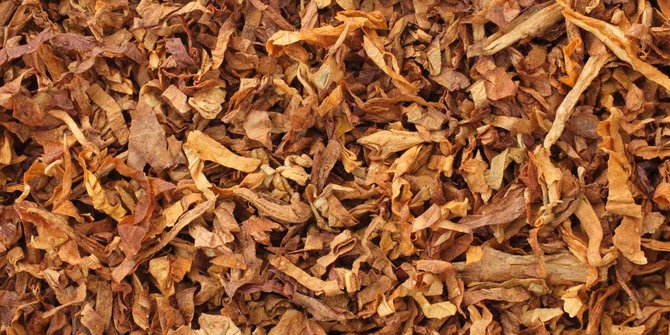Merdeka.com – Tobacco (Nicotiana tabacum) is one of the most widely cultivated non-food crops worldwide and is grown in 120 countries. More than 75 species of Nicotiana occur naturally, including 49 species native to America and 25 species native to Australia according to the website Nature.
Tobacco use has been documented for more than 8,000 years. Tobacco cultivation likely began in 5000 BC with the development of corn-based agriculture in Central Mexico.
Early in the history of tobacco, Swedish.org mentions tobacco is used as a medicine for all healing, for dressing wounds, reducing pain, and even for toothaches. In the late 15th century, Christopher Columbus was given tobacco as a gift from Native Americans.
Tobacco was immediately popular in Europe, because they believed that tobacco had miraculous healing powers. Soon after, tobacco smoking was promoted as a viable way to get a “daily dose of tobacco.” In the early 17th century, scientists and philosophers discovered the consequences that smoking had on their lives, including difficulty breathing and difficulty quitting.
Finally, during the last 20 years, smoking has undergone many changes. Cigarettes now contain more harmful ingredients than ever before, and the tobacco industry has drastically improved their marketing strategy, targeting new and diverse populations, including children.
But it turns out that the tobacco plant is more than just a filler for cigarettes, although it is undeniably one of the world’s most avoidable causes of premature death and disease.
According to a new study, the tobacco plant, Nicotiana, is thought to contain strong therapeutic potential for treating conditions such as type-2 diabetes, stroke, dementia, arthritis, more effectively and at an affordable price according to the website. Science Daily.
The following are the health benefits of tobacco that need to be known, summarized from the page realliving:
Benefits of Tobacco
Relieves allergies
The first benefit of tobacco is that it can relieve allergies. Tobacco leaf poultice can be used to apply skin inflammation to help relieve minor itching and pain. The nicotine in tobacco is responsible for removing allergens and repairing skin until it returns to normal.
Give first aid to small wounds
The next benefit of tobacco is to provide first aid to small wounds. If topical iodine is not available, you can use crushed tobacco to keep the wound fresh from stinging. Simply moisten the leaves with a little cold water to form a paste and apply to the affected area.
Clean the nasal passages
The next benefit is cleaning the nasal passages. As a home remedy for colds, Native Americans used to boil tobacco in desert sage and inhale the vapors or smoke the leaves to cleanse the lungs.
They also believe that it helps people with asthma and tuberculosis breathe better.
Allegedly Can Prevent Diabetes
According to researchers at the University of Western Ontario and the Lawson Health Research Institute in Canada, the benefits of tobacco can be used to produce large amounts of an anti-inflammatory protein called Interleukin 37, or IL-37 – which is produced naturally in small amounts of human kidneys. This protein has been shown in preclinical models to treat a wide variety of inflammatory and autoimmune diseases effectively.
Study published in the journal This Plant Cell Reports demonstrates that tobacco plants can pave the way for effective and much more affordable treatments than current methods.
Previously, scientists at the University of Central Florida biomedical found that insulin could one day be grown in genetically modified crops, including tobacco plants. Then the benefits of tobacco are used to prevent diabetes before symptoms appear or to treat the condition at a later stage.
In this study, a team of scientists led by Professor Henry Daniell, genetically engineered tobacco plants with the insulin gene and then gave the frozen plant cells to diabetic mice as a powder for eight weeks. The results of their study, which are reported in Plant Biotechnology Journal, indicating that the diabetic mice have normal blood and urine sugar levels, and their cells produce insulin at normal levels.
Several uses of the tobacco plant for treatment
Launch WebMD, tobacco leaves contain a chemical called anabasine, which makes tree tobacco leaves toxic when ingested. Ideally, these chemicals act as stimulants when consumed in low doses.
However, it behaves like a depressant when consumed in high amounts. But tree tobacco appears to help repel insects when applied to the skin.
The benefits of tobacco include: sore throat, wound, fever, insect repellent, pain, headache, and several other conditions. However, more evidence is needed to determine the safety and effectiveness of tree tobacco for these uses.
[amd]
 Tobacco illustration. © special
Tobacco illustration. © special